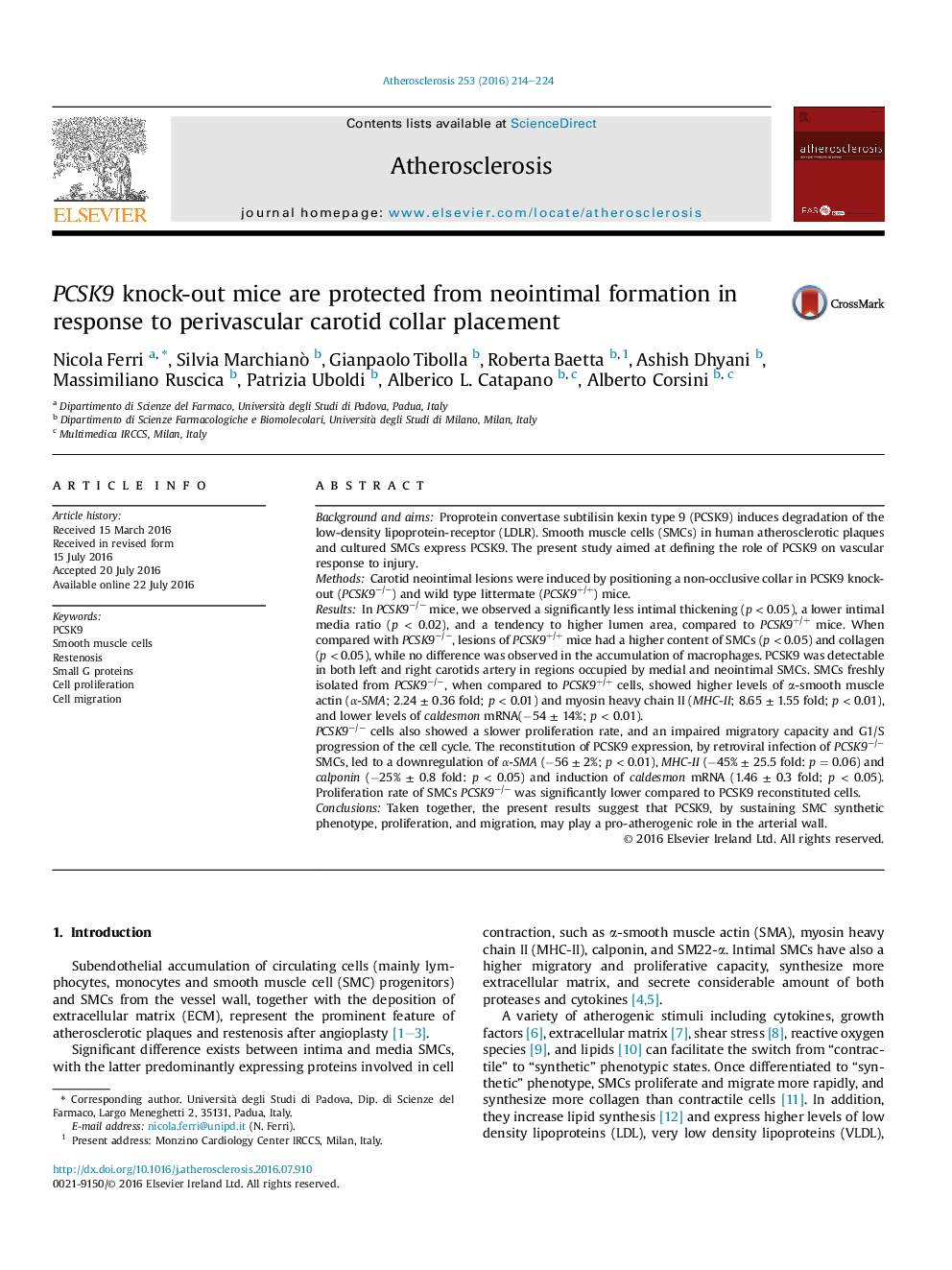| کد مقاله | کد نشریه | سال انتشار | مقاله انگلیسی | نسخه تمام متن |
|---|---|---|---|---|
| 5942482 | 1574712 | 2016 | 11 صفحه PDF | دانلود رایگان |

- In response to perivascular manipulation, neointimal formation is reduced in PCSK9â/â mice.
- PCSK9 regulates smooth muscle cell differentiation, proliferation and migration.
- The reconstitution of PCSK9 expression rescued the impaired proliferation and migration capacities of SMCs PCSK9â/â.
- SMCs PCSK9â/â respond less efficiently to the proliferative and chemotactic action of platelet derived growth factor-BB.
Background and aimsProprotein convertase subtilisin kexin type 9 (PCSK9) induces degradation of the low-density lipoprotein-receptor (LDLR). Smooth muscle cells (SMCs) in human atherosclerotic plaques and cultured SMCs express PCSK9. The present study aimed at defining the role of PCSK9 on vascular response to injury.MethodsCarotid neointimal lesions were induced by positioning a non-occlusive collar in PCSK9 knock-out (PCSK9â/â) and wild type littermate (PCSK9+/+) mice.ResultsIn PCSK9â/â mice, we observed a significantly less intimal thickening (p < 0.05), a lower intimal media ratio (p < 0.02), and a tendency to higher lumen area, compared to PCSK9+/+ mice. When compared with PCSK9â/â, lesions of PCSK9+/+ mice had a higher content of SMCs (p < 0.05) and collagen (p < 0.05), while no difference was observed in the accumulation of macrophages. PCSK9 was detectable in both left and right carotids artery in regions occupied by medial and neointimal SMCs. SMCs freshly isolated from PCSK9â/â, when compared to PCSK9+/+ cells, showed higher levels of α-smooth muscle actin (α-SMA; 2.24 ± 0.36 fold; p < 0.01) and myosin heavy chain II (MHC-II; 8.65 ± 1.55 fold; p < 0.01), and lower levels of caldesmon mRNA(â54 ± 14%; p < 0.01).PCSK9â/â cells also showed a slower proliferation rate, and an impaired migratory capacity and G1/S progression of the cell cycle. The reconstitution of PCSK9 expression, by retroviral infection of PCSK9â/â SMCs, led to a downregulation of α-SMA (â56 ± 2%; p < 0.01), MHC-II (â45% ± 25.5 fold: p = 0.06) and calponin (â25% ± 0.8 fold: p < 0.05) and induction of caldesmon mRNA (1.46 ± 0.3 fold; p < 0.05). Proliferation rate of SMCs PCSK9â/â was significantly lower compared to PCSK9 reconstituted cells.ConclusionsTaken together, the present results suggest that PCSK9, by sustaining SMC synthetic phenotype, proliferation, and migration, may play a pro-atherogenic role in the arterial wall.
173
Journal: Atherosclerosis - Volume 253, October 2016, Pages 214-224